Elveden Chapter of Maharajah Duleep Singh
While vacationing in England, a plan came up to visit Elveden- The final resting place of the last ruler of Punjab; Maharajah Duleep Singh, the heir to the mighty Sikh empire son of Maharajah Ranjit Singh. The quest for the last traces of the Maharajah, at Elveden turned out to be quite an adventure.
Locating the Elveden estate we had a soul-stirring experience when we visited the Saint Andrew’s Church where the 3 graves of the family are located– the first is the very young son of the Maharajah– Albert Edward Alexander Duleep Singh, then one in the centre is Maharani Bamba Duleep Singh and the last grave is of Maharajah Duleep Singh!
For Indians the memories of Maharajah Duleep Singh are those of him being a child king exiled to England who presented the Kohinoor Diamond to Queen Victoria.
Subsequently we had come to the quiet town of Thetford to visit the Royals at the Ancient House Museum and view the regal statue of the Maharajah Duleep Singh in traditional Indian attire!
Anglicized Childhood
During his childhood in Punjab, Maharajah Duleep Singh was kept with an English guardian – Sir Login and English friends so that his interaction with Indians was none. Next he was taken to England in 1854 not knowing that he would not see his country, ever again .In London, he often met Queen Victoria who was fond of him and invited him to play with her children at the royal residences- Osborne house in Isle of Wight and Windsor castle.
Meeting Mother Rani Jindan Again
Gradually he developed the lifestyle of an English aristocrat-Dressing up fashionably, organising shooting parties….till his mother joined him in 1861.It is said that Rani Jindan was shocked to see her son’s clean shaven look and convinced him that his loss of Sikh faith was worse than him losing his Sikh Kingdom .She also told him about ‘The Prophecy’ that he would rule India. It is believed by authors and historians that Maharajah Duleep Singh resented and regretted his conversion to Christianity and forced departure from Punjab.
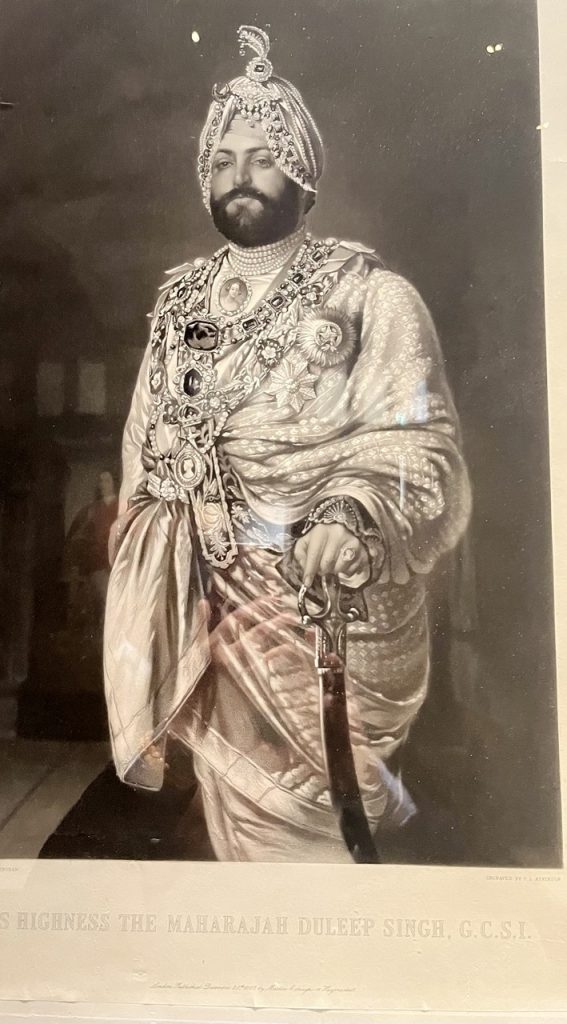
1882 Engraved print from an original oil-painting of the handsome Maharajah Duleep Singh in royal Indian attire
In the previous week I had visited the magnificent exhibition of Maharajah Ranjit Singh in London which showcased Maharani Jindan’s few pieces of jewelry that had been part of her personal ornaments of close to 1000 pieces!!They were taken by the British in 1849 after the annexation of Punjab when the Maharani fled to Nepal!
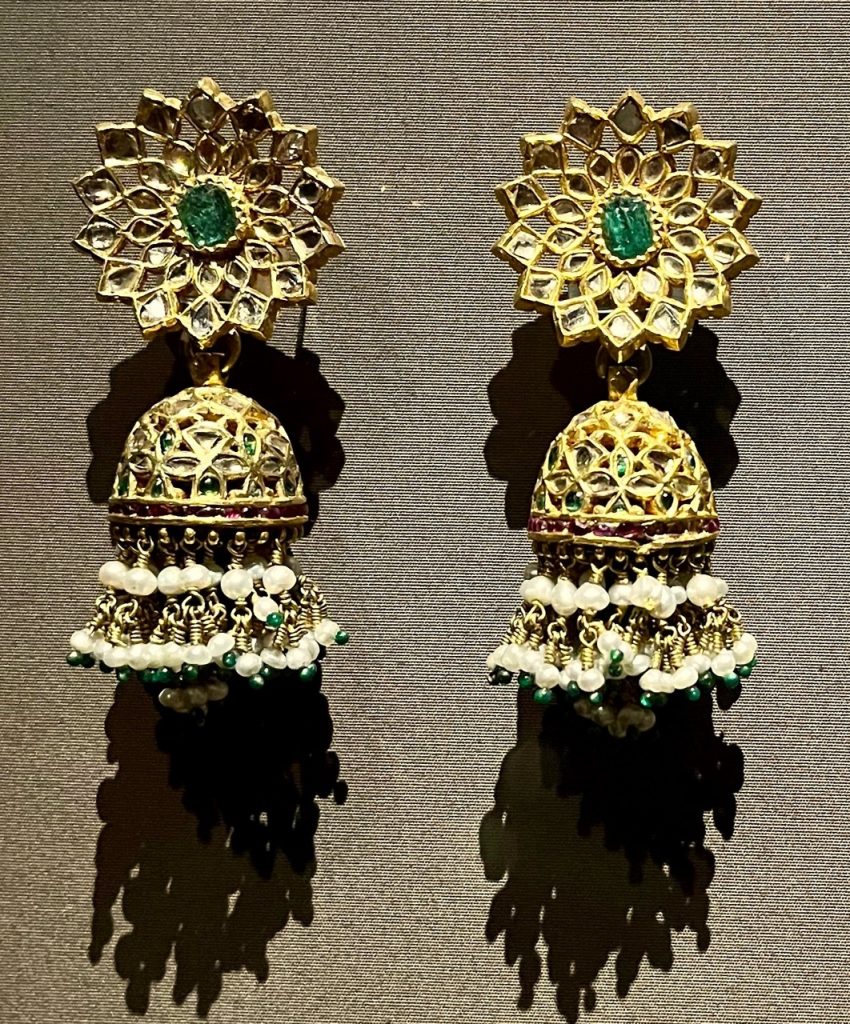
Maharani Jindan’s 0ver 1000 pieces of personal jewellery was captured by the British after the Anglo- Sikh war!
Maharani Jindan at the London Exhibition
Before Maharani Jindan met her son Duleep Singh in 1861 he negotiated the safe return of over 600 pieces, cleverly delivered to the Maharani as she boarded the ship for England and so ironically travelled back to England with her! After her death in England in 1863 her possessions were retailed by Frazer and Haws who maintained the Crown jewels! I often ruminate- why were they not handed over to Maharajah Duleep Singh?
Additional memorable was a sketch of Maharani Jind Kaur by George Richmond in London in 1863; commissioned by Maharajah Duleep Singh to capture his ageing mother –still so beautiful! Soon after the Sketch was completed the last Maharani of Punjab died in her Kensington home. In 1863 the Maharajah moved to the Elveden- Hall estate after the death of his mother and Sir Login- his childhood guardian. Afterwards he married Maharanee Bamba in1864 followed with six children.
This was the reason that we had made futile attempts to see the Elveden Hall earlier!!
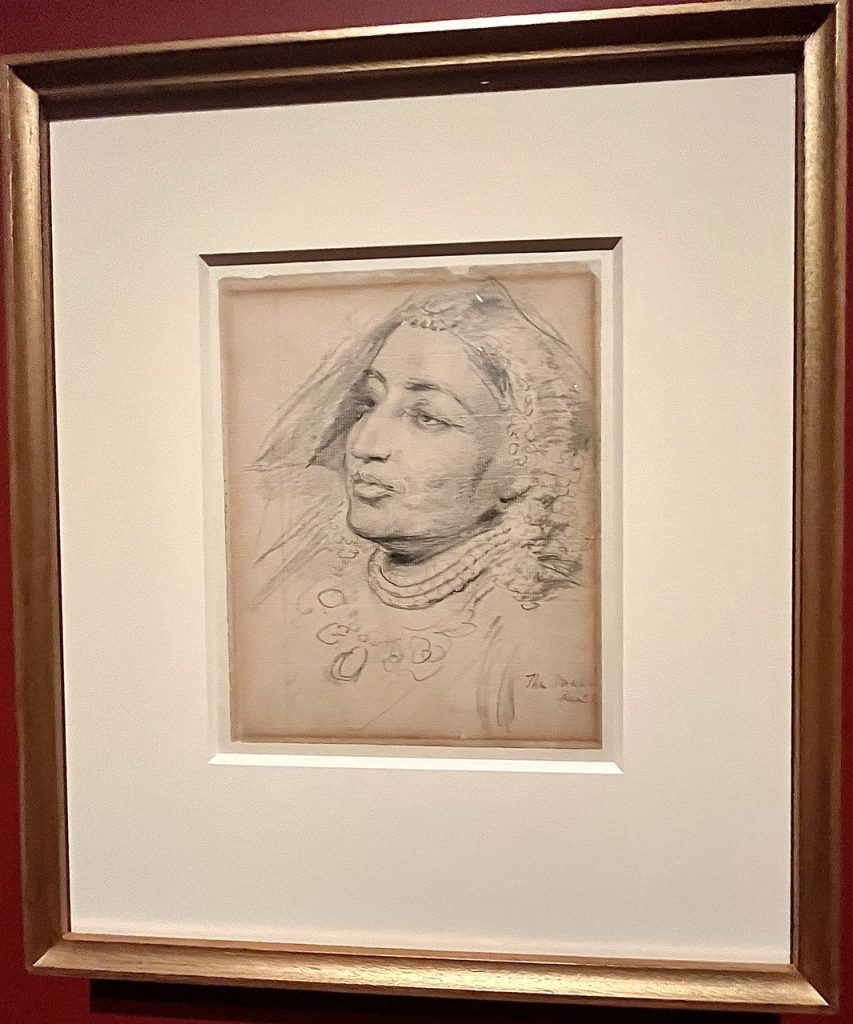
The sketch of Maharani Jindan, just before she died; commissioned by her son Maharajah Duleep Singh in London
The Urge to see India
The urge to see India was rekindled when Maharajah Duleep Singh met his cousin Sandanwalia who also tried to convince him about The Prophecy .In 1886 he issued an appeal to the people of India begging for forgiveness for giving up Sikhism. Then he decided to sail to Bombay with his family but was arrested at Aden by the British and his family went back to England. Failing to reach India, Maharajah Duleep Singh did not go to England but went to Paris; from here he carried on revolutionary activities-Meeting Russian diplomats, Irish revolutionaries and Indian Princes for help.
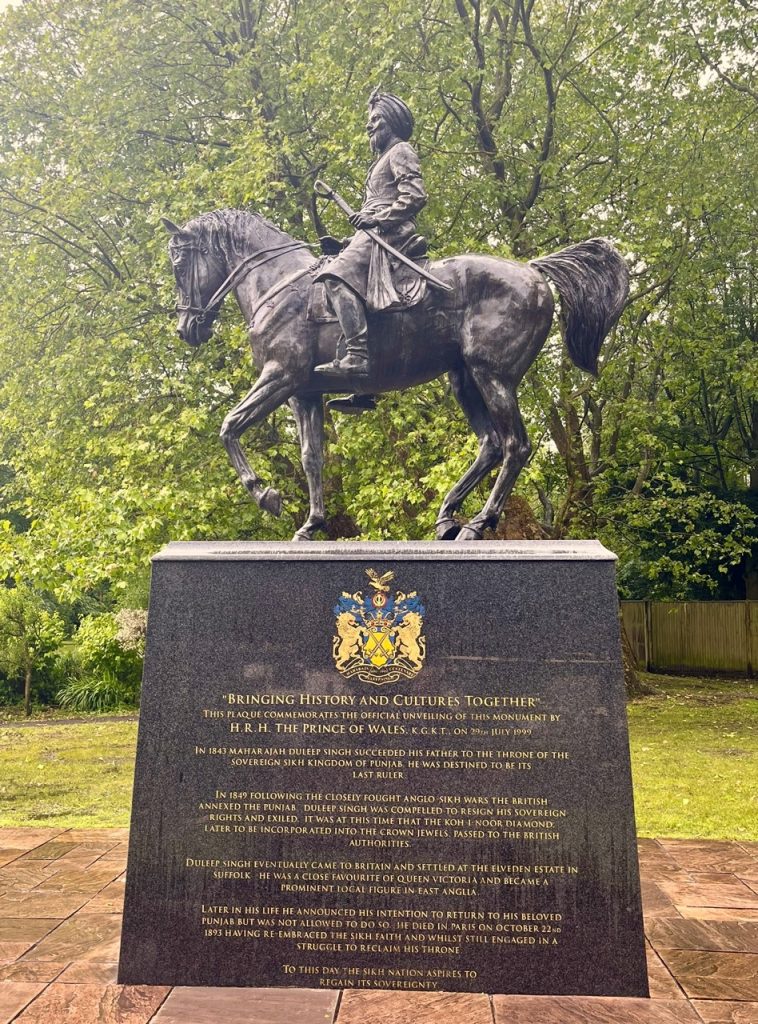
The majestic statue of Maharajah Duleep Singh -the last descendant of Maharajah Ranjit Singh of the Sikh empire in England
All missions failed and his friends died leaving him bitter and alone in Paris. He remarried Ada Douglas in 1889 and had two more children. At the age of 55 Maharajah Duleep Singh died in Paris and in the years to follow; ironically all his eight off- springs died childless, bringing an end to his lineage. Elveden estate and Hall were sold to pay Maharajah’s debts!
What became of the hundreds of priceless display items and personal belongings in the Elveden hall?
Thetford- Butten Island to Ancient House Museum
We reached Thetford- a quiet town, some two and a half miles from the Elveden estate. The main draws at Thetford are the Butten Island statue of Maharajah Duleep Singh and its Ancient House Museum whose one tiny room is dedicated to Maharajah Duleep Singh’s family.
Ancient House Museum:
A short walk from the car park we entered the 15th century the Ancient House museum set in an attractive Tudor house and stepping into it felt like going back centuries. We were welcomed by the English staff with whom we got into an interesting discussion on Sikhism before our tour commenced. My mind was full of queries related to Maharajah Duleep Singh and so accepted the handsets with English or Punjabi commentary and were told that many Punjabi tourists often visited Thetford for the Ancient museum.
The Ancient House museum was donated to the Thetford town by Prince Frederick Duleep Singh who loved historical places and bought this house to set up a museum in it. We commenced on a journey to rediscover the family tree of Maharajah Ranjeet Singh, family paintings and other memorabilia mainly contributed by Prince Frederick himself. Additionally it bought back memories of the magnificent Maharajah Ranjit Singh Exhibition in Central London that we had visited recently.
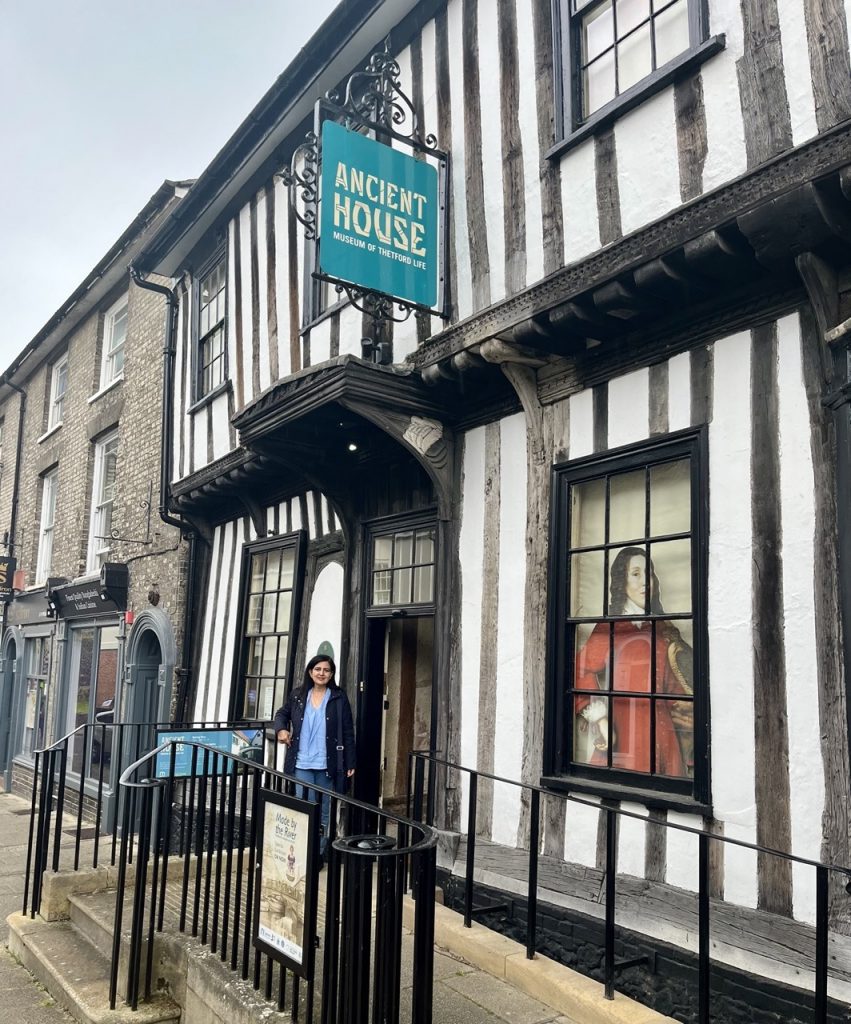
Writer outside the 15th century Ancient House museum donated by Prince Frederick Duleep Singh to Thetford town
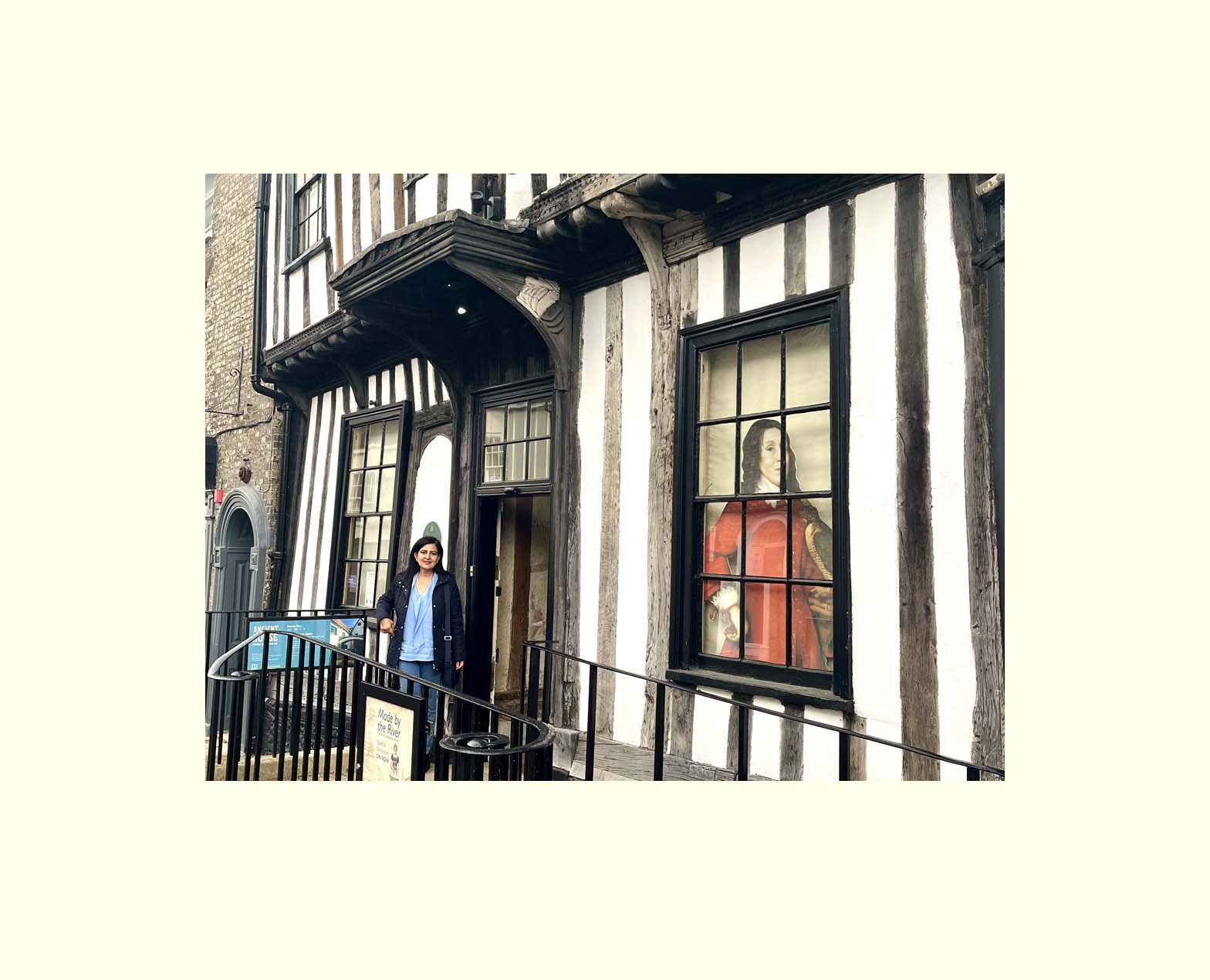
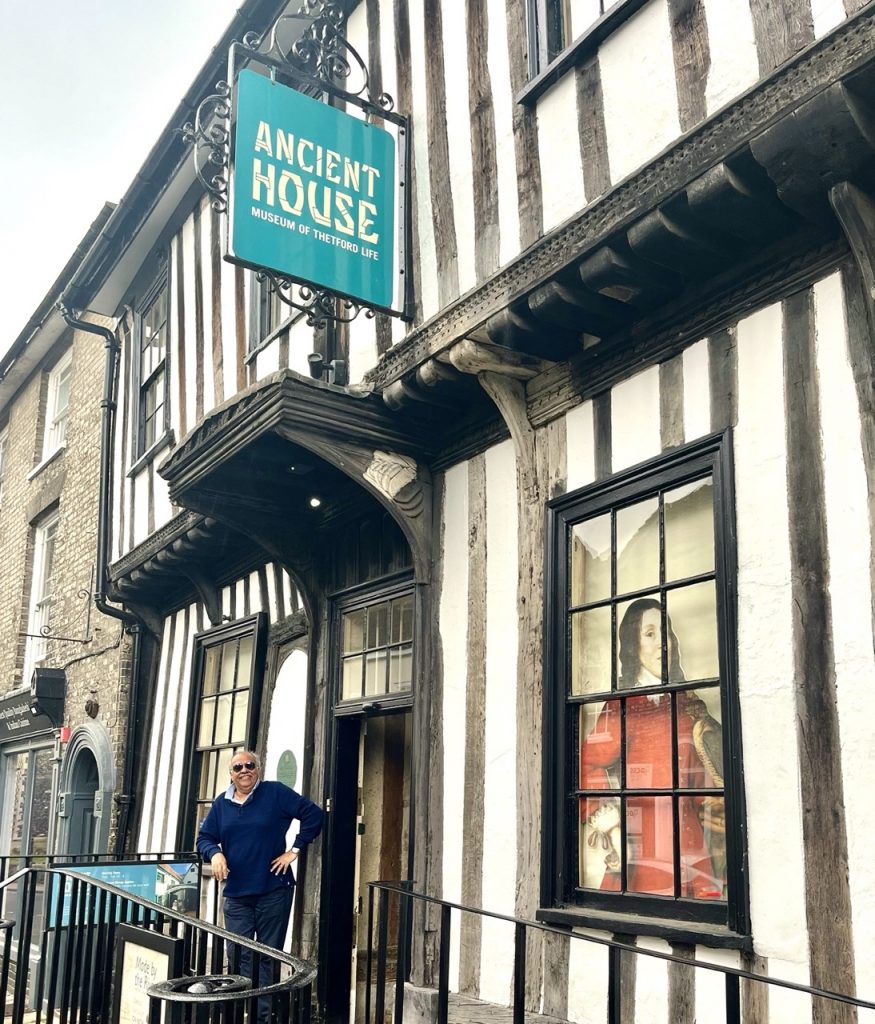
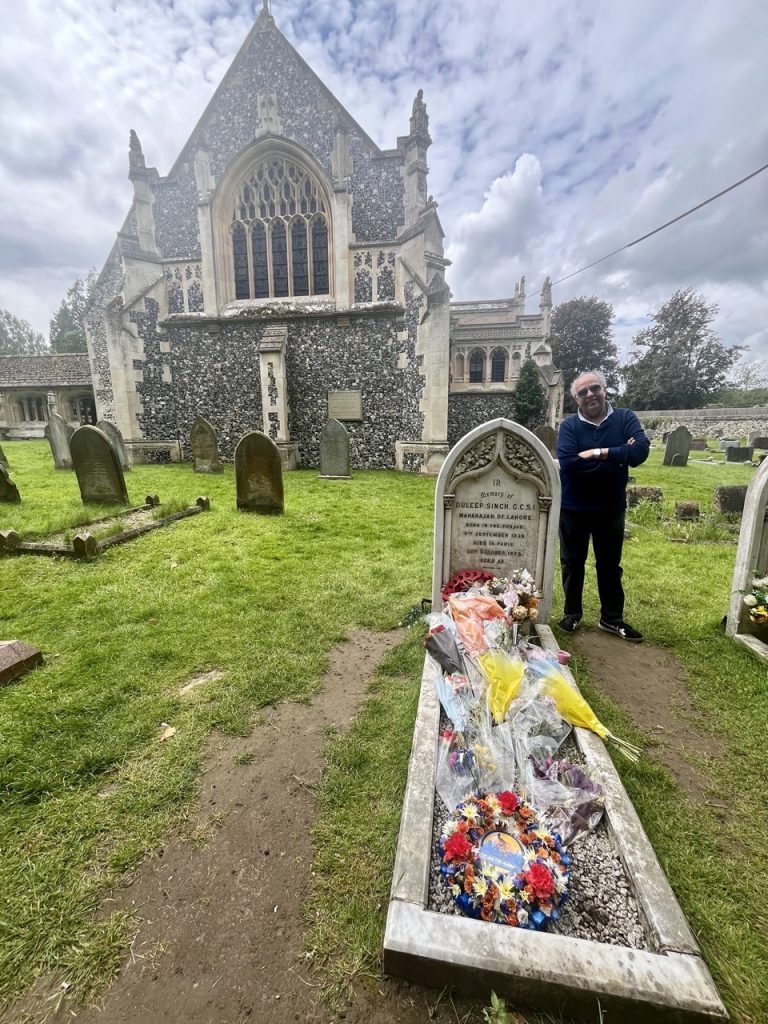
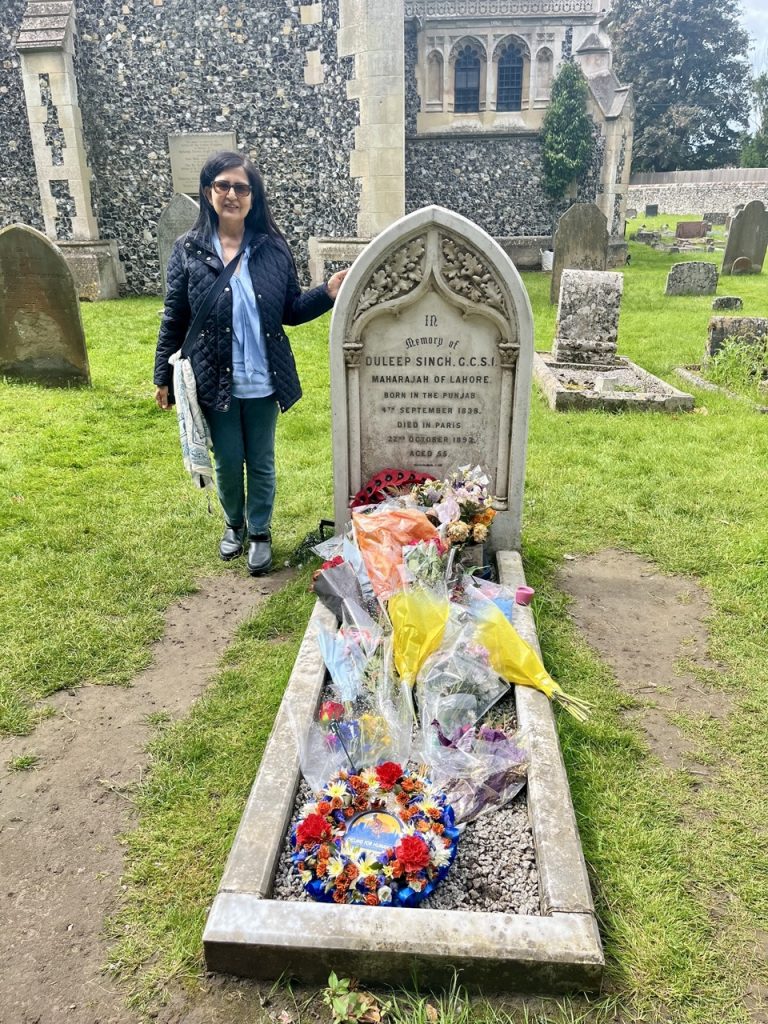
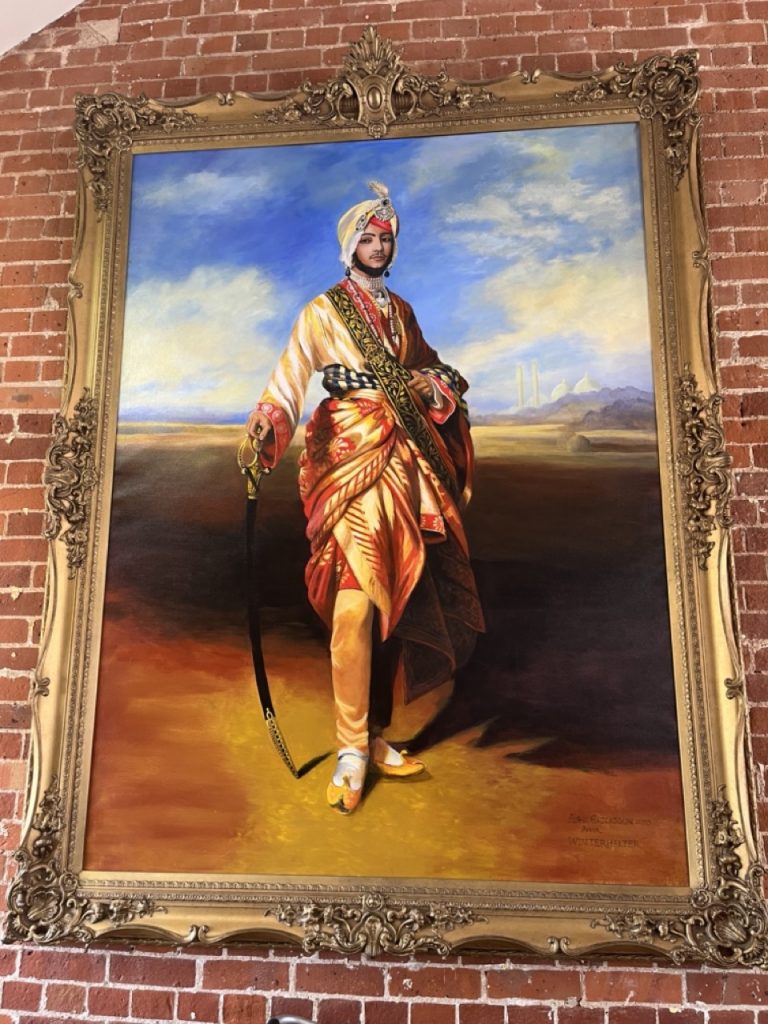
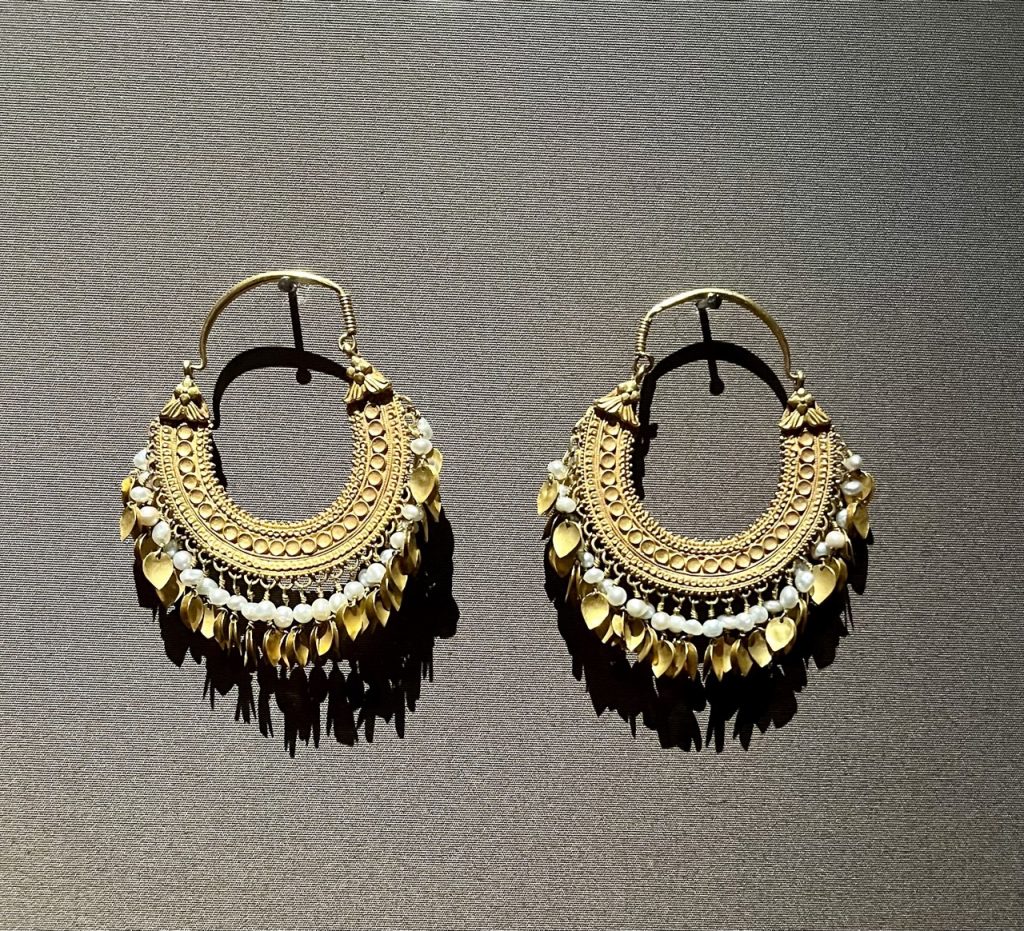
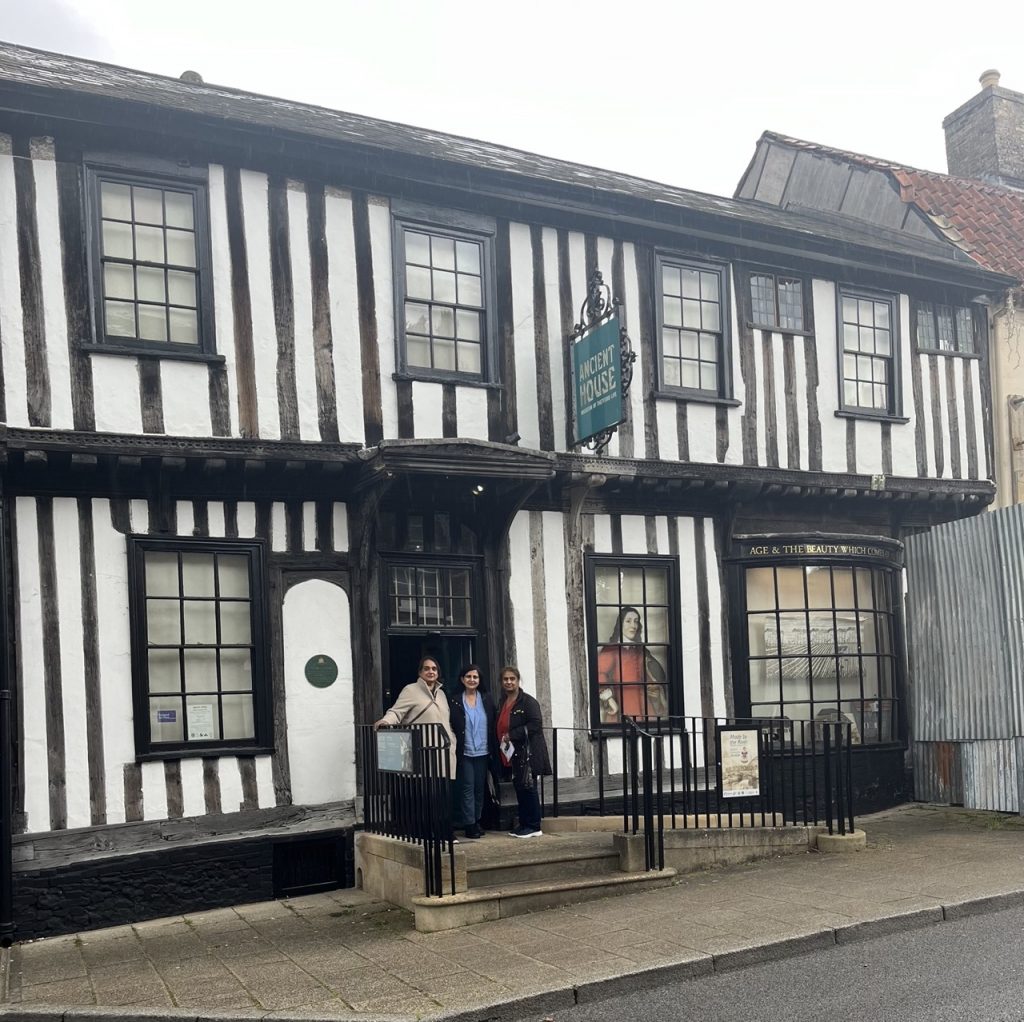
🌿🍒 Nice and informative article… Worth reading… Rated 5 Star’s… Thanks for sharing the Link… Kind regards…
A Tribute to Seema Ji’s Timeless Journey
Some journeys are not just lived; they are written with soul-stirring depth, painted with emotions, and captured through the lens of a heart that truly sees beyond the ordinary. Seema Ji, your journey is one such masterpiece—a narrative woven with your versatile and profound writing, adorned with breathtaking photographs that speak volumes without uttering a word.
Your words don’t just tell stories; they breathe life into them. They hold the power to transform the mundane into the extraordinary, to uncover the unseen, and to awaken emotions that linger long after the pages are turned. Every piece you write is a reflection of the wisdom, grace, and endless simplicity that make you who you are.
Through your lens, the world takes on a new meaning—every frame capturing not just an image, but a feeling, a memory, an unspoken truth. The way you see and express life is nothing short of magical.
Seema Ji, every time I immerse myself in your work, I am transported beyond time, beyond space—into a realm where art and emotion merge effortlessly. Your words transcend me, reshape my thoughts, and make me experience beauty in its purest form. Your journey is an inspiration, and I am endlessly grateful to witness and celebrate it.
Dear Seema ji, your blog’s stunning photos capture our rich heritage and stir deep Punjabi pride.
Dilip Singh’s gentle spirit, as seen in “Black Prince,” inspires heartfelt admiration and sympathy.